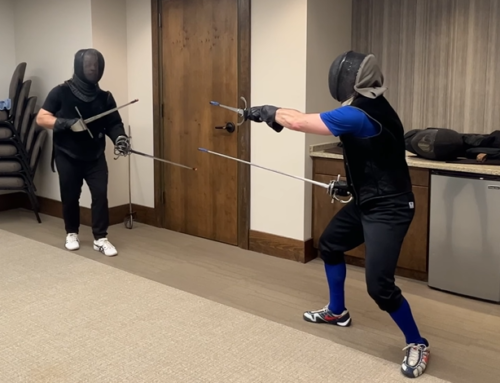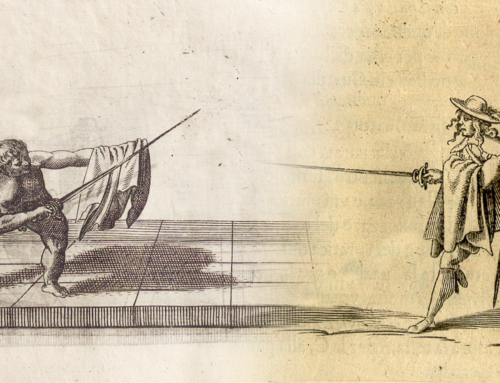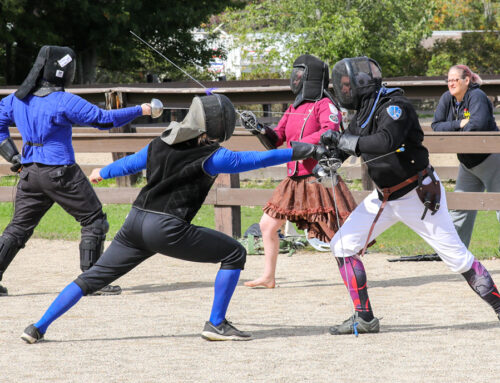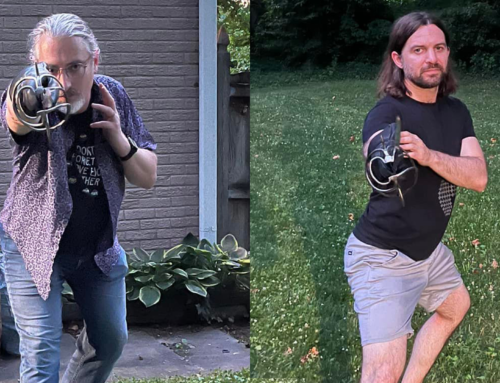Mastering the feint is challenging aspect of rapier fencing in the best of times because the overall success of a feint relies on one fencer’s ability to sell the feint as a real attack and the other fencer’s ability to read it as real or not.
In short: it’s Deception vs. Insight.
And with COVID-19 severely limiting in-person practices, improving your feints and deceptive game is extra challenging. What we can do, however, is focus on the mechanics of our feints. The closer our feints look to our real attacks, the higher chance those feints have to succeeding.
Here are some tips for analyzing and improving your feints without a partner.
And to be honest, video analysis work like this is a great tool for improving your rapier-game even when in-person fencing practices are doable.
5 Steps for Feinting Self-Analysis
This exercise follows a pretty standard script when it comes to using video for self-analysis.
First, film yourself both attacking and feinting. Try not to overthink this bit. Just get into your en garde stance and lunge/feint as if you were in a bout.
Also try to film yourself both profile and head-on, so you get an overall view of your attacks. I also shoot myself feinting in terza, quarta, and seconda to see if there’s any variations there.
Once you’ve recorded yourself feinting and attacking, now you can analyze your video. Import your clips into your video editor of choice. Here are a few options to choose from:
- Lightworks
- DaVinci Resolve
- Filmora
- iMovie
- WeVideo
- youtubemultiplier.com
For the sake of this exercise, we don’t need to analyze our entire lunge. We just need to understand how we move from our Defensive Stance to our Forward Guard. Anything that happens after that point is the actual attack and isn’t super relevant to this exercise.
Note: I know a lot of folks don’t utilize the Forward Guard/Offensive Posture in their fencing and instead keep a more erect posture throughout their entire lunge. If this is you (and that’s fine), you still want to only analyze the portion of your lunge from your Defensive Stance to just before you lunge.
Ideally, you’ll want to have the video clips side-by-side so you can scrub/scroll through both for easier analysis. See what looks the same and what looks different or… off.

Jot down all these differences but only mark your top three. It’s easy to get overwhelmed when you think you need to fix All the Things at once. It’s better to choose one to three big items to work on that’ll have the most impact. There’s a good chance fixing these bigger issues will fix the smaller ones.
After this, practice your feints with a focus on your main three items. As always, work on this in the usual order of:
- Crispness. Breaking a movement down into individual parts (or “check points”)
- Smoothness. Blend together the checkpoints so there’s no pause but do the actions slowly.
- Speed. After you can do the action properly in a slow & smooth way, then gradually add in speed.
You can then film yourself again for additional video review. You can do this process as many times as you’d like.
Things to Look Out For In Your Self-Analysis
When analyzing your videos, here are some things to look out for:
- Your order of movement. Are you moving in proper order when attacking and feinting? Ideally, we want both actions to be in the proper order of Sword, Arm, Hip-Hinge and then Legs.
- Look at the angle & position of your torso & limbs. How far do you hip hinge before lunging? Is your body placement more or less the same?
- Consider your arm extension. Are you extending the arm completely or holding back?
- Check weight distribution. Are you keeping your weight on your rear leg or do you start to shift early? There are times when we need to shift our weight to get our opponent’s to buy our feint, but we don’t want to move out of order.
- Check your speed. Are you moving at roughly the same speed or is one much slower than the other? You don’t necessarily want to feint at your max speed, but going too slow is going to give your opponent a long tempo to work in.
It’s also important to know which differences are a feinting problem and which are an attacking problem.
For example: if you move in proper order when feinting but not attacking, you’ll want to work on your attacks instead of making your feints less efficient.
DONATIONS: If you found this video useful, please consider a small donation so I can continue to produce rapier & other historical martial arts content. Donate at https://www.paypal.me/thetavernknight











Leave A Comment